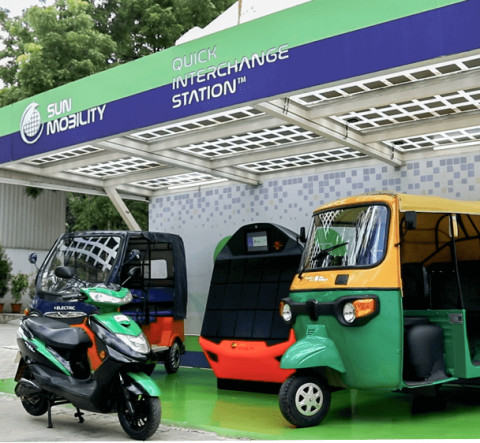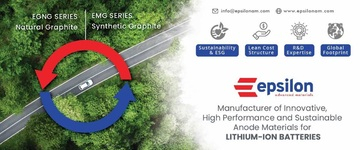Can battery swapping make EVs mainstream?
EVs are increasingly becoming a common sight on Indian roads. As the race for EV adoption intensifies, here's a look at how the battery swapping policy could shape India's EV journey.
To bolster the electric vehicle ecosystem in India, Finance Minister Nirmala Sitharaman in the Budget 2022 speech announced that a battery swapping policy would be soon deployed by the Indian government.
"Considering the constraints of space in urban areas for setting up charging stations at scale, battery swapping will be brought out and interoperability standards will be formulated," Ms. Sitharaman announced in the budget session in February this year.
Soon after, NITI Aayog, the apex public policy think-tank of the government of India said it will roll out a battery swapping policy within the next few months – thereby giving EV buyers an option to buy a new EV without a battery.
As is well known, battery cost accounts for close to 25-30 percent of the EV cost; battery swapping is believed will bring down the upfront cost of EVs drastically, thereby fast-tracking EV adoption across India. The proposed policy also calls on the private sector to develop sustainable and innovative business models for battery- or energy-as-a-service to improve efficiency in the EV ecosystem.
To understand various aspects of battery swapping policy and what the 'battery-as-a-service' (BaaS) business model would mean for India, India Energy Storage Alliance (IESA) with the support of its partners organized a virtual roundtable on battery swapping.
Experts at the session discussed the role of the service providers in creating a commercially viable ecosystem, opportunities and challenges, and the regulatory mechanism needed for successful a battery swapping system. Incorporated here are the views of the eminent speakers, as discussed at the forum.
Dr. Anand Deshpande, Sr. Deputy Director & Head Automotive - ARAI
A lower upfront cost, efficient charging, and fast swapping times, with no range anxiety, are a few of the main benefits of the battery swapping business model for users.
In a battery swapping model, the user does not invest in the battery or take the technology risk associated with the battery and it becomes the responsibility of the energy provider to replenish the old, discharged batteries, with new ones. Further, the implementation of battery recycling becomes much more efficient as the battery is not owned by the user, the energy provider is responsible for the battery and is in the best place to make use of the batteries for first use, second use, and eventual recycling.
Priyank Agarwal, VP, Strategy & Business - Exicom Power Solutions
One of the main benefits of swappable batteries is that they reduce downtime. Little to no time taken for charging means more on-road time for EVs. This aspect is not only important for EV users in the personal mobility segment but more so for delivery fleets, and passenger vehicle businesses such as e-3Ws, e-taxis, and e-buses.
Nikhil Bhatia, Founder - Hop Electric
Swapping enables users, especially those who are earning their bread on wheels to have higher earnings, therefore the biggest beneficiaries of swapping would be e-2Ws and e-3Ws.
Electric vehicles with less than 6kWh would be the first movers in this space.
Nitin Nandan, Sr. Program Manager - Bounce '
Battery swapping is a viable business model for ride-sharing. Apart from the fact that it minimizes downtime, it brings in 2x revenue, 100 percent better asset utilization, and reduces dependence on high voltage rapid charging stations. Swapping is also beneficial for the environment and recycling and reuse.
Challenges in battery swapping
Interoperability and standardization of the swappable battery ecosystem continue to be a dominant challenge for battery swapping. Interoperability is believed to provide many benefits, but it has huge execution challenges – technical, legal, and commercial.
Mr. Agarwal explained that if an interoperable battery works with a different energy operator or technology provider when a consumer comes and changes a battery of one energy operator for a battery of another operator, "who will earn the CAPEX in this scenario? Who takes care of safety when the battery of one operator goes into another energy operator network? Whose liability is that?"
Another challenge from the technical operator's perspective was that of battery theft and abuse. The batteries are designed to be portable and therefore they are vulnerable to theft. Further, when users handle batteries or swap there remains a chance of abuse/accident of the battery or charger.
The battery swapping policy is intended to be consumer-centric to ensure the user does not get locked up to one service provider and can change the subscriber easily if they are not happy with the service. However, there exist challenges to making standards for batteries and other technical requirements such as dimensions, connection, communication protocols, etc.
Lastly, battery and infrastructure is a high investment program that requires rentals for land, manpower (if a station has service providers for swapping; direct, supervisory), and maintenance (charging cabinets, cooling at swapping station). Further, there is no FAME II framework for availing subsidies for compliant vehicles sold without batteries.
Opportunities & Support
At present, the government has set into motion several initiatives that encourage battery swapping, with the most recent step being the announcement of its intent to come up with a battery swapping policy.
The Ministry of Power has also identified the need for a battery-swapping station in Public EV Charging Infrastructure guidelines. The Ministry of Road Transport & Highways has permitted the registration of EVs without batteries. In addition to these steps, various State government EV policies provide incentives to swappable battery EV models.
The Bureau of Indian Standards, the national standard body of India is working on the standard formulation for swappable batteries (form factor, connector, communication protocol, etc., and also swapping stations.
Owing to these factors, experts believe quick adoption and fast ramp-up of battery swapping in e-2W and e-3W segments is possible and could be further explored in e-taxis and e-buses.
India currently boasts of a growing swapping ecosystem. Reportedly, more than 50+ leading companies in India, across the value chain, are already associated with battery swapping.
Experts who back battery swapping technology believe that India being a populated country with scarce land resources, a swapping business model could be a boon for overall EV adoption in the country. However, interoperability warrants more clarity.
























